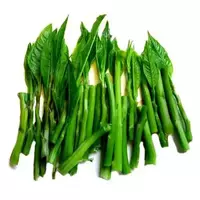Laconos

Laconose (Phytolacca) is a member of the genus of perennial plants belonging to the Laconose family. It is noteworthy that among gardeners this plant is known by a different name - phytolacca, and in America it is called pokeberry.
These are mainly perennial grasses with regular whole leaves, but much less often you can find laconos in the form of shrubs and tree-shaped. The flowers of the plant are quite small, for the most part bisexual, collected in racemose inflorescences. Each carpel has one ovule. The perianth of laconosa is simple, mostly five-membered. The fruit of the plant is a juicy berry of dark color.
Laconos begins to bloom in July and pleases with its miniature flowers until the end of August, after which in September the berries fully ripen, forming dense berry brushes. They are brilliant, as if lacquered, dark red first and then practically black. At a time when purple-black glossy berries are being sung, the laconos look as if dotted with shiny dark candles like candelabra.
Two species of this arstenium grow on the territory of our state - berry laconos (Phytolacca acinosa ROXB. ) And American laconos (Phytolacca americana L. ). Approximately twenty species of laconos are characteristic of tropical and subtropical areas of the world, mainly America.
After the studies, it was found that phytolancin (alkaloid) is present in the laconos roots, and also contains essential oil, which is characterized by a sharp taste and a rather sharp smell. Laconos fruits, leaves, roots and seeds all have tannins, saponins, sugars and bitterness. A distinctive property of laconos is that, for the most part, all parts of the plant are poisonous.
The only exception is edible laconos or berry laconos (Phytolacca acinosa), which is deliberately cultivated as a vegetable plant in southeast Asia and tropical America. Young shoots of laconos are commonly eaten in boiled form, while the leaves of the plant, quite fragrant and pleasant to taste, are used in a similar way to spinach. However, unfortunately, in our country this type of laconos is able to grow only in a greenhouse, so there are exclusively overseas guests on the counter.
In homeopathic, that is, extremely small doses, the properties of laconos are manifested in antirheumatic, stimulating, anticataral, antiparasitic, anti-inflammatory, mild painkiller, cleansing and immunostimulatory actions. But it should be prescribed with extreme caution due to the toxicity of the plant.
The use of the plant itself and preparations based on it during pregnancy is contraindicated. This is due to the increased likelihood that abnormalities may begin in the fetus during intrauterine development.
laconosa 23 kCal
Energy value of laconos (Ratio of proteins, fats, carbohydrates - ju):
Proteins: 2.6 g (~ 10 kCal)
Fats: 0.4 g (~ 4 kCal)
Carbohydrates: 2g (~ 8kCal)
Energy ratio (bj | y): 45% | 16% | 35%
 Español
Español Français
Français Português
Português Русский
Русский 简体中文
简体中文 繁體中文
繁體中文 日本語
日本語 한국어
한국어 العربية
العربية Türkçe
Türkçe Қазақ
Қазақ Deutsch
Deutsch Italiano
Italiano Українська
Українська
